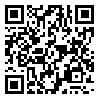BibTeX | RIS | EndNote | Medlars | ProCite | Reference Manager | RefWorks
Send citation to:
URL: http://ijpcp.iums.ac.ir/article-1-84-en.html
Abstract
Introduction: This study aimed to make and validate the Social Desirability scale (lie detecting scale) for NEO PI-R test.
Method: Twenty-two statements of Social desirability were selected and combined with the ori-ginal NEO PI-R test. The test was administered on 285 job applicants. After factor analysis, 15 statements were selected. The subjects were categorized into three groups based on the means and SD of the NEO PI-R scores and were compared with 79 incumbents as controls.
Results: The lowest intergroups difference was seen on Openness, and the most difference was seen on Conscientiousness.�The incumbents’ scores on the Neuroticism and Agreeableness domains did not differ from the low scorers in Social Desirability. The high scorers on Social Desirability tended to show more stable and conscientious than the low scorers. There was no significant correla- tion between Social Desirability scores and Extroversion and Openness. However, other domains were significantly correlated with Social Desirability scores.
Conclusion: Social Desirability scale could differentiate between those who want to fake good and those who are honest in responding to NEO PI-R. The findings also revealed that in the profile of those who tend to fake good, Extroversion and Openness domain scores can be safely accepted while the other domain scores of these subjects must be interpreted with caution.
Received: 2007/03/25 | Published: 2005/05/15
| Rights and permissions | |
 |
This work is licensed under a Creative Commons Attribution-NonCommercial 4.0 International License. |



